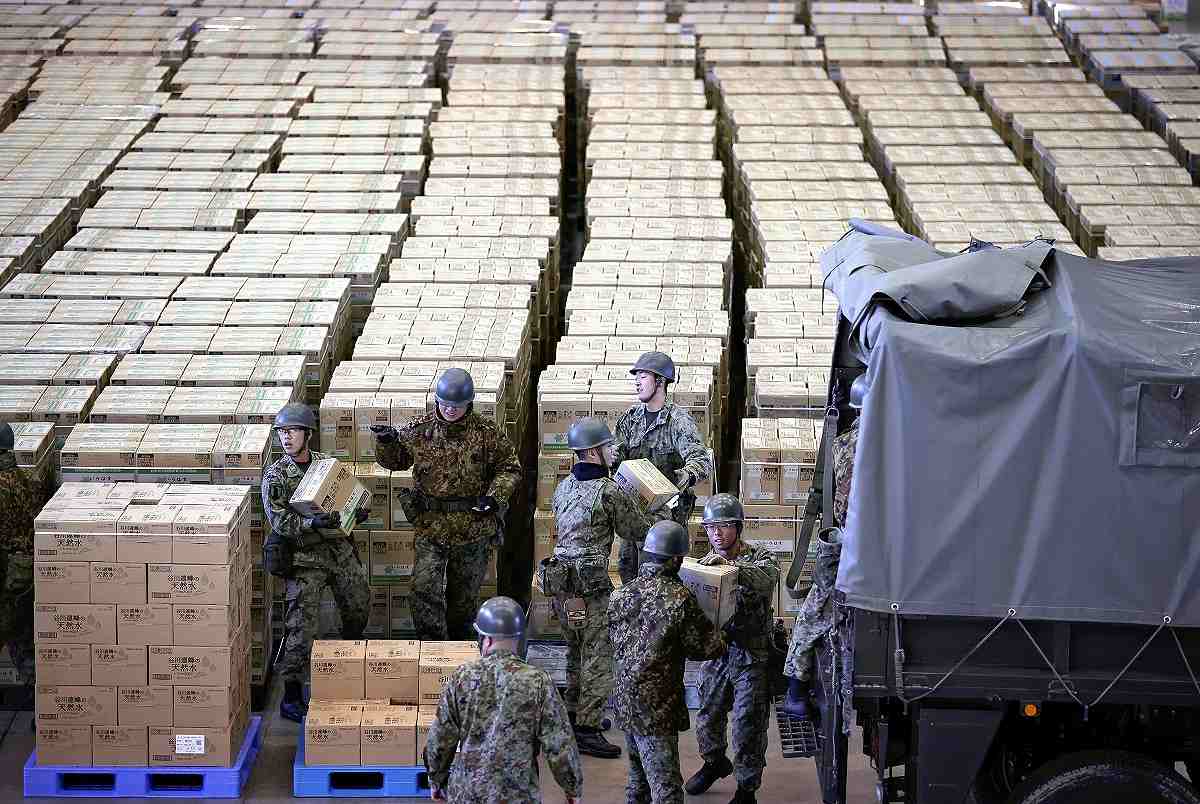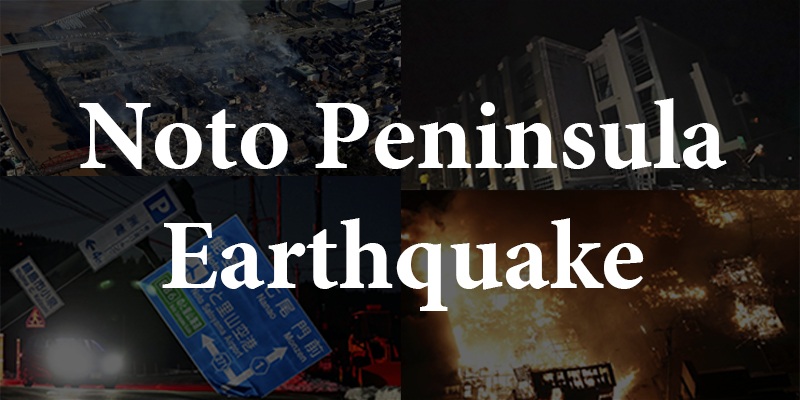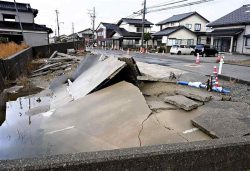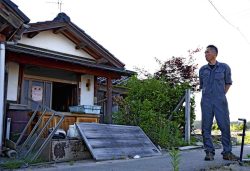Noto Earthquake: Delivering Supplies Difficult; Stockpiles Exhausted with More Evacuees than Anticipated

Self-Defense Forces personnel load relief supplies into a vehicle in Kanazawa on Friday.
15:58 JST, January 6, 2024
The transportation of relief supplies via road to the areas affected by the Noto Peninsula Earthquake in Ishikawa Prefecture is in full swing.
While food and water has begun to reach the center of hard-hit municipalities, sufficient supplies have yet to be delivered to more isolated communities.
The town of Takimata in the city of Wajima in the prefecture remains isolated because a nearby road was blocked by a landslide, making it impassable to vehicles.
“I’m truly thankful,” a 52-year-old man said early Friday afternoon. He just received drinking water and packs of instant ramen delivered by Self-Defense Forces members who had walked from a supply-unloading base in Kanazawa. They were the first relief supplies that came to the town.
When the disaster struck, he had traveled from his home in Toyonaka, Osaka Prefecture to visit his 45-year-old wife’s parents.
With the water supply and cell phone services cut off, about 20 people in the community gathered together, sharing food.
This man, worried about aftershocks, has been spending the night in his car. He was also concerned about the dwindling amount gasoline in the car and said, “As it will get even colder, I want to refuel as soon as possible.”
Such a distressing situation can be seen all over the prefecture. One municipality after another ran out of water, food, and cold-weather protection gear that had been stockpiled in preparation for a disaster within a matter of days.
In the city of Wajima, the stockpile of emergency rations ran out on the very day the quake occurred. The city had aimed to stockpile 5,400 meals-worth of emergency food rations based on the number of evacuees at the time of the earthquake that struck the area in 2007.
The recent earthquake struck on New Year’s Day, the first since the restrictions due to the COVID-19 pandemic were lifted.
In addition to the people who had returned to their parent’s homes, there were also many tourists, making the number of evacuees much higher than expected, according to the local government.
The municipal government of Suzu had a plan to stockpile three days’ worth of emergency food for evacuees at disaster shelters and other locations.
However, about 800 people evacuated to the shelter set up at Iida Elementary School on Monday, more than three times its 265-person capacity.
The emergency rations ran out on the first day. From the following day, evacuees managed their hardships by bringing in some food and sharing it with others, while volunteers cooked food for them.
Suzu Mayor Masuhiro Izumiya said on Friday, “On top of the extent of the damage which was beyond expectations” the earthquake occurring at the start of a new year meant there were many evacuees in addition to the registered list of residents.
Push-type support
The central government has been putting great emphasis on “push-type support” to deliver relief supplies immediately after the earthquake, without waiting for requests from local municipalities.
Many supplies remained undelivered at the bases used by prefectural government to unload supplies in Kanazawa and other cities that suffered relatively little damage.
This was because the road networks were cut off in many places, making it extremely difficult to deliver supplies to the hardest-hit municipalities beyond such blocked points.
The situation began to improve thanks to the completion of emergency restoration work on major roads on Thursday afternoon.
SDF trucks began to transport relief supplies to such places as the city halls of Wajima and Suzu from Friday morning.
However, city roads in heavily damaged municipalities were still impassable in several places, with sufficient supplies unable to be delivered to isolated communities.
The national and prefectural governments are rushing to restore damaged roads, and plan to deal with the situation by using police vehicles to lead trucks delivering supplies, and also by airlifting supplies using SDF helicopters.
Shohei Beniya, an associate professor of crisis management at the University of Hyogo, said, “For those who are in isolated communities where there is no prospect of road restoration anytime soon, the government should consider asking them to temporarily evacuate to places where they can receive support in the form of supplies and medical and welfare services.”
"Society" POPULAR ARTICLE
-

M4.9 Earthquake Hits Tokyo, Neighboring Prefectures
-

Israeli Tourists Refused Accommodation at Hotel in Japan’s Nagano Pref., Prompting Protest by Israeli Embassy and Probe by Prefecture
-

M7.5 Earthquake Hits Northern Japan; Tsunami Waves Observed in Hokkaido, Aomori and Iwate Prefectures
-

Tsukiji Market Urges Tourists to Avoid Visiting in Year-End
-

M5.7 Earthquake Hits Japan’s Kumamoto Pref., Measuring Upper 5 Intensity, No Tsunami Expected
JN ACCESS RANKING
-

Tokyo Economic Security Forum to Hold Inaugural Meeting Amid Tense Global Environment
-

Keidanren Chairman Yoshinobu Tsutsui Visits Kashiwazaki-Kariwa Nuclear Power Plant; Inspects New Emergency Safety System
-

Imports of Rare Earths from China Facing Delays, May Be Caused by Deterioration of Japan-China Relations
-

University of Tokyo Professor Discusses Japanese Economic Security in Interview Ahead of Forum
-

Japan Pulls out of Vietnam Nuclear Project, Complicating Hanoi’s Power Plans


























